
This post is part of a Street Design Standards series, and is the first of four street typlogies proposed.
Local Streets are an extension of the adjacent land uses and provide space for people to socialize, play, and even loiter, and will be designed and managed as places primarily for people. People are likely to spend most of their time in or near Local Streets, since these are where to find most destinations. As such, it should feel natural and comfortable to dwell in or stroll through a Local Street. Parents should feel comfortable letting their kids play unsupervised, and noise levels are low enough to hold a conversation.
Design Goals of a Local Street
- Low-speed, low-volume: The most important way to achieve a Local Street is to minimize car speeds and traffic volumes.
- People-oriented: More space allocated for public activities and green space. Heat island is minimized while tree shade is maximized. Crossing the street mid-block should feel comfortable and safe.
- Motor vehicles are welcome as guests, but not as a dominant use of the street.
Design Features of a Local Street
Local Streets constitute the majority of the street network. The design elements for Local Streets apply to all new or completely reconstructed streets but also provide a target condition when existing streets are modified. Examples of various features that may be incorporated when retrofitting existing streets into Local Streets include:
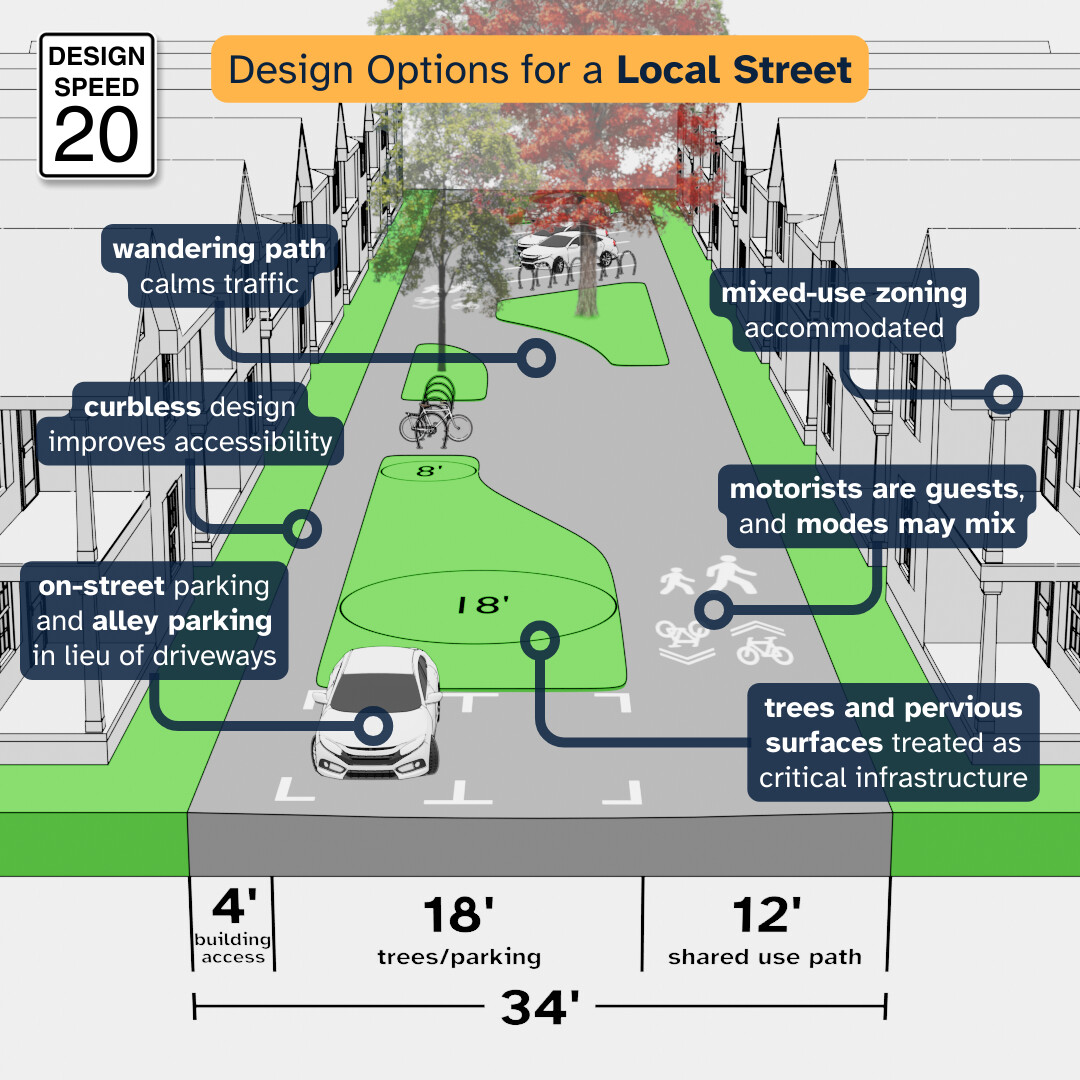
Traffic Calming and Reduction
The maximum design speed will be 20 mph, but could be as low as 10 mph for new streets designed as Woonerf-style areas. This can be achieved through:
- Modal filters
- Narrow Street width: Local Streets that utilize curbs should have a curb-to-curb width of no more than 32 feet, while curbless designs may have an overall right-of-way of no more than 35 feet. These dimensions are easily achievable with relaxed lane width restrictions.
- Horizontal and vertical deflection:
- Speed lumps/humps/tables
- Raised Crosswalks
- Chicanes
- Neckdowns
- Textured pavement
Shared Street Uses
Local Streets enable varied and shared uses and low speeds and volumes preclude the need for most physical separation. Bike lanes, sidewalks and other facilities for separating different travel modes should not be required on all Local Streets.
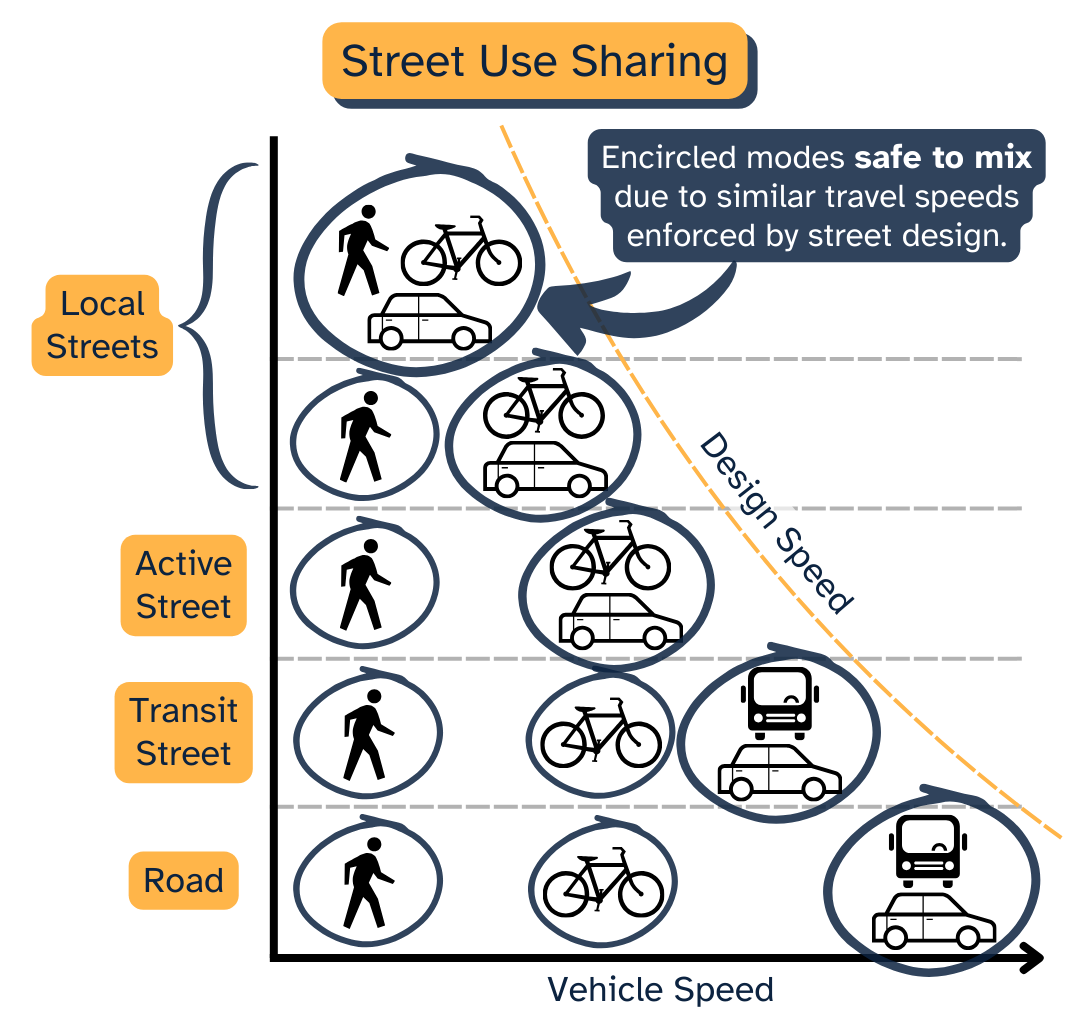
Shared streets allow reductions in the overall travel surface area, which in turn results in cheaper installation, less long-term maintenance liability, reduced stormwater runoff, and safer pedestrian crossings. In some cases, curbs can be eliminated entirely, such as on K St. in Downtown:

Gateway Treatments
Extra care should be given to intersections of two dissimilar streets:

At intersections with higher speed street typologies (active streets, transit streets, or roads), potentially multiple traffic calming treatments should be employed in concert. Examples include:
- Curb extensions
- Textured pavement
- Raised crosswalks
- Edge friction (e.g. low-growing plants and trees, trash cans, etc.)
Flexibility
Local Streets need not be uniform or symmetrical in cross section, which means they can change shape and purpose along their width and length. This is a feature, not a bug! A reasonable amount of variation can contribute significantly to traffic calming and placemaking, and flexibility in the design constraints allow local designs to be sensitive to local contexts. Examples of flexible design constraints:
| ❌ Rigid Constraints | ✅ Flexible Constraints |
|---|---|
| ❌ 6ft minimum sidewalks on both sides. | ✅ 12ft minimum of walking paths in the entire cross-section, including shared-use paths. |
| ❌ 6ft minimum planter strip on both sides. | ✅ 8ft minimum planter strip on at least one side, or designer discretion to achieve minimum shade goal of 50%. |
| ❌ 10ft maximum width lanes in each direction. | ✅ 32ft maximum curb-to-curb width mid-block. ✅ 18ft maximum curb-to-curb width at pedestrian crossings. |
| ❌ Parallel parking on both sides. | ✅ Parking may be on one side, both sides, alternating sides, diagonal, parallel, or none at all. |
Healing a Local Street in Sacramento
Many existing Sacramento streets are too wide and straight, and would require design interventions to comply with a 20 mph or lower design speed. Take 62nd St. in South Sacramento as an example:

Sixty-second Street is 30 feet between curbs, with many sections lacking sufficient tree canopy and prone to flooding. A low utilization rate of street parking and lack of planter strip results in a 23-30 ft effective street width. These are ripe conditions for speeding and result in an uncomfortable experience for anyone outside of a car. Sensitive to this local context, one step we can take to incrementally convert 62nd St. into a Local Street is to install large tree wells that double as traffic calming:

This incremental treatment achieves long-term shading goals while simultaneously increasing traffic safety and mitigating flood risk. The flexibility in design constraints of Local Streets would allow the city to experiment with unique tree offsets and curb dimensions to avoid preexisting underground utilities.
Domestic Precedent
Portland, OR: “Pedestrian Shared Street”
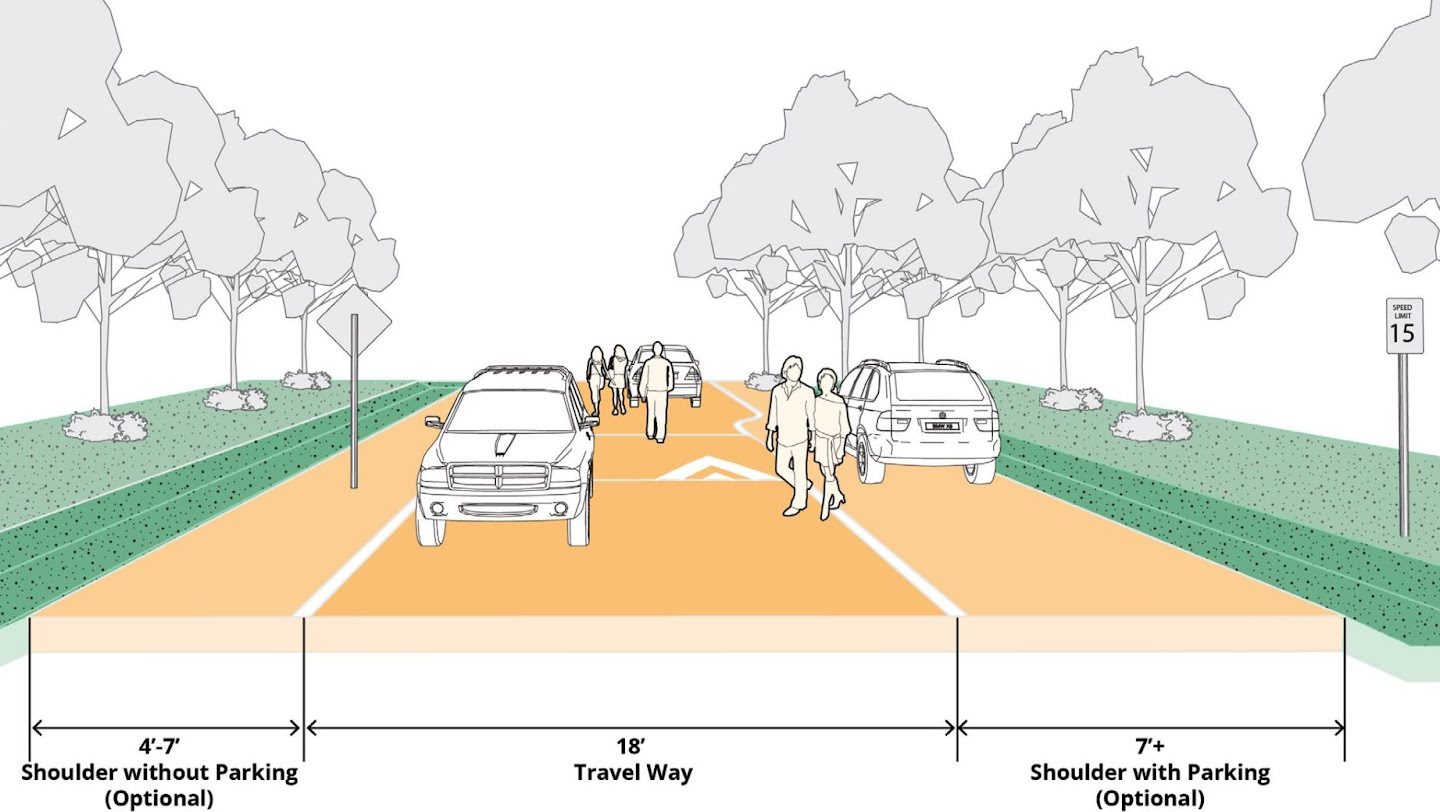
Seattle, WA: “Neighborhood Yield”
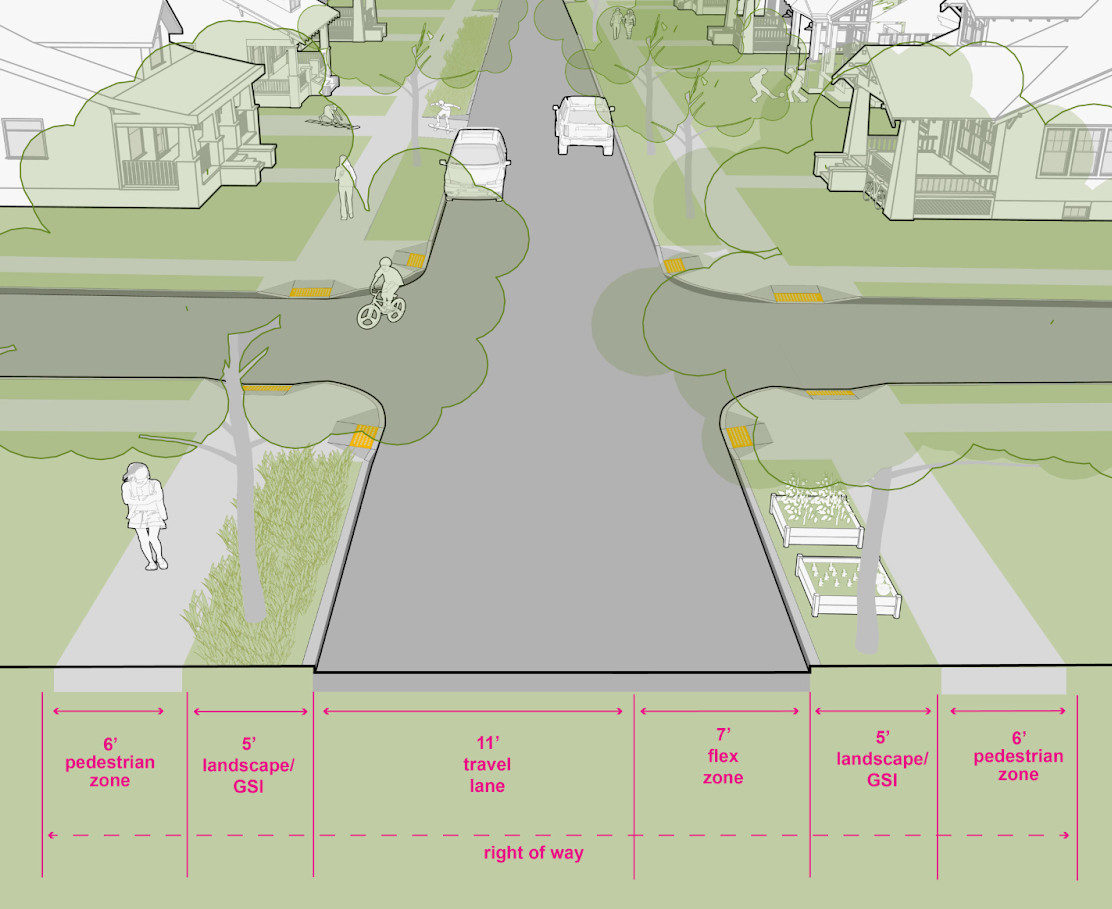
Detroit, MI: “Local”
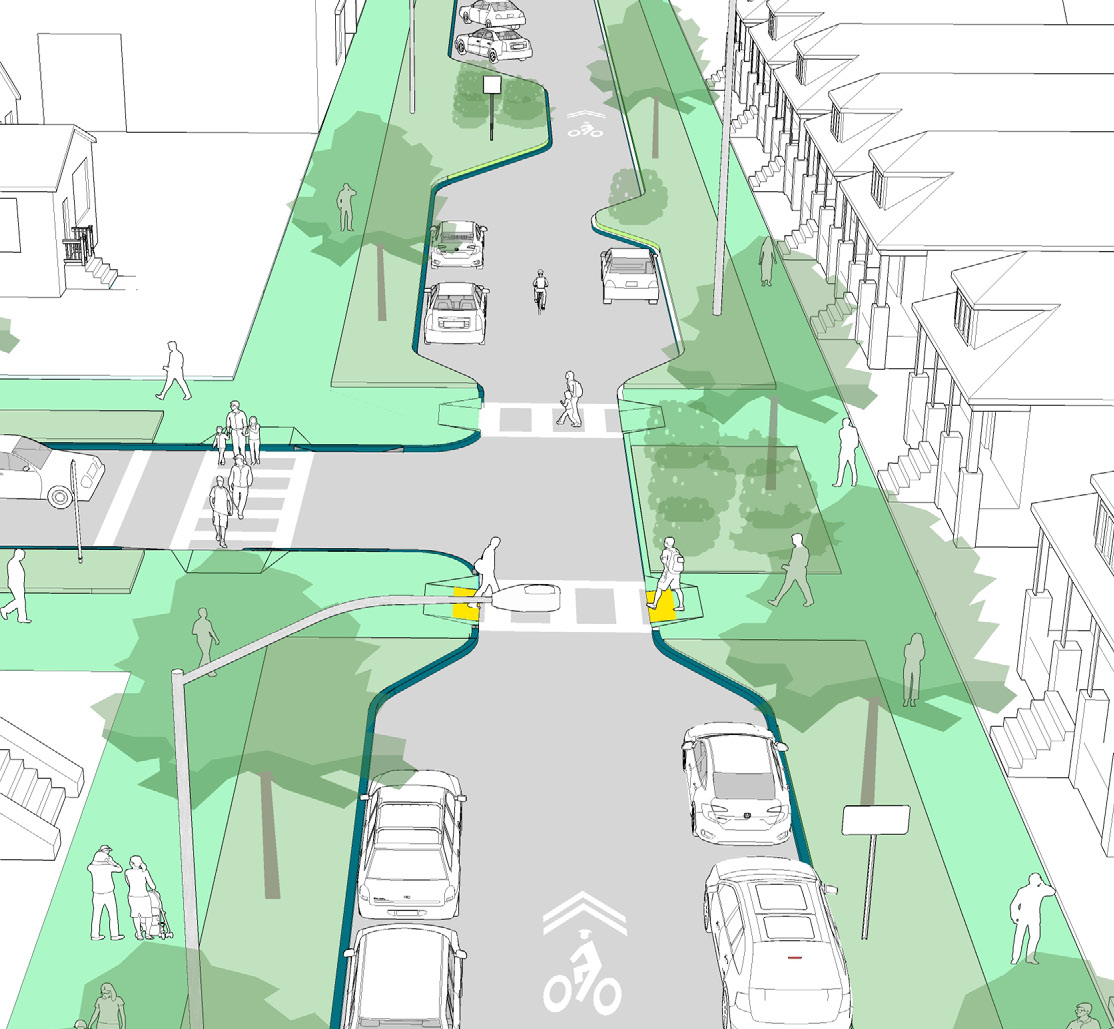
See Also
- NACTO Urban Street Design Guide, National Association of City Transportation Officials, New York, NY; ISBN 978-1-61091-494-9 © 2013; https://nacto.org/publication/urban-street-design-guide/
- SacCity intersections of local streets https://gettingaroundsac.blog/2023/03/25/intersections-of-local-streets/
- Narrow Residential Streets: Do They Really Slow Down Speeds? James M. Daisa, P.E. and John B. Peers, P.E.
https://nacto.org/docs/usdg/narrow_residential_streets_daisa.pdf
Leave a Reply